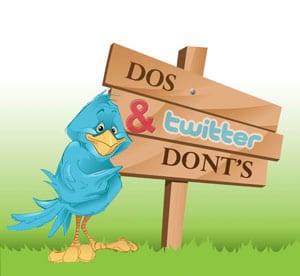 If you’re on Twitter, or have a client on it, I want you to do something right now. Go to that profile page and read the last five tweets. You just read the five most important tweets of all time. These are the tweets that determine whether or not you get followed.
If you’re on Twitter, or have a client on it, I want you to do something right now. Go to that profile page and read the last five tweets. You just read the five most important tweets of all time. These are the tweets that determine whether or not you get followed.
Why? Because unless you’re Oreo, chances are you won’t ever be able to rest on your laurels with one tweet. Twitter is a stream – it is the CB radio of the digital age. People jump on, jump off and jump in whenever something floats by that interests them. That not only goes for conversation, but for accounts to follow. The decision usually involves clicking on a profile and checking out the most recent tweets. And in the same way being on the second page of Google isn’t much better than the 100th, it is your most recent tweets that decide your fate.
So what can you do to optimize those fateful tweets? It’s not as hard as you think. Here are five quick tips to ensure that your last five tweets turn observers into followers:
- Watch your retweets (RT): The RT is a powerful amplification tool. It’s how you share someone else’s tweet with your followers. But keep this in mind: people want to follow YOU. Make sure you share your own thoughts, links and insight more than you do others. If most of your last few tweets aren’t your own, we might as well skip the middleman and follow the people you retweeted.
- Take long conversations off the stream: engagement is great, but if you find yourself going back and forth with someone and the content isn’t useful to the bulk of your followers, take it to DM or email. Eavesdropping is only fun when you’re talking about your weekend in Vegas.
- But make sure you have conversations: keep the “social” of social media in mind. If your last five tweets consist of no replies to others, then you look like a broadcast channel (which is only fine if you indeed are a broadcast/media channel). When people follow you, there’s the expectation that someday they might interact with you. If you don’t show interaction, then you’re immediately disappointing that potential follower.
- Be gracious and helpful, but not all at once: thanking people or directing them to a help line (if you’re a brand) is great for the person you’re addressing, but utterly useless for everyone else. Make sure you don’t tweet more than two of these in a row. Intersperse actual content between them, so your stream isn’t simply the same tweet to different people, all the way down.
- Think globally, act individually: no matter what, do your best to make every tweet as relevant as possible to your entire audience, even if it’s to a single person. If you’re thanking someone, use the rest of the 140 characters to add something that further solidifies your brand or advances your agenda (e.g. “Thank you for saying that, I do indeed believe that good parenting involves bacon.”). If you are RTing someone, add your perspective (e.g. “Because of bacon! RT @HuffingtonPost parents who insist on breakfast raise happier kids”).
At the end of the day, it all comes down to one thing: the best social media strategies are the ones that make you more human, more relatable. But before you say it’s not rocket science, consider the fact that even @NASA hasn’t quite mastered this.
Image credit: www.saltywaffle.com


